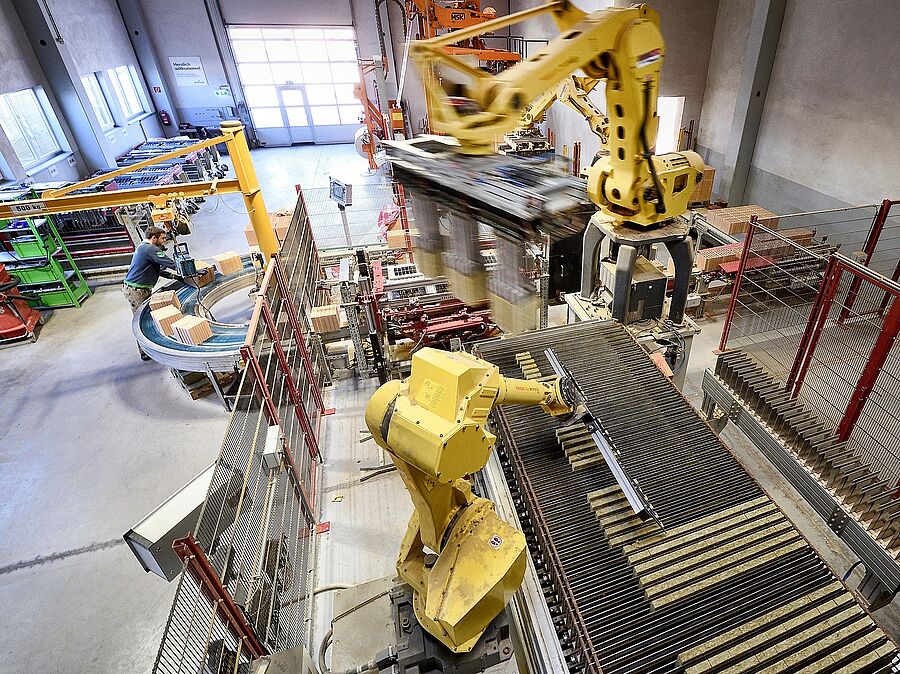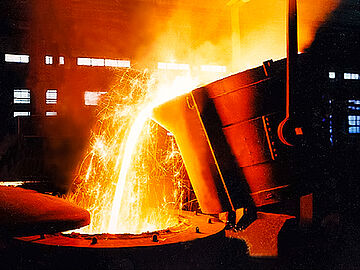Innovative Technologies and Strategies for Decarbonizing the Steel Industry
The steel industry is one of the most important sectors of the global economy, but also one of the most emission-intensive. Globally, it accounts for approximately 7–9% of CO₂ emissions, making its decarbonization a key objective for achieving the Paris climate goals. The pressure to reduce emissions is increasing — from both policymakers and society. Transitioning to climate-neutral production processes is therefore essential to paving the way for a more sustainable future.
The AIT Austrian Institute of Technology is a leading research and consulting partner, developing innovative technologies and strategies for decarbonizing the steel industry.
Challenges of Decarbonizing the Steel Industry
Decarbonizing the steel industry is a complex task, as it involves numerous challenges:
- High Energy Demand: Steel production requires vast amounts of energy, which currently comes predominantly from fossil fuels.
- Technological Dependency: The traditional blast furnace process is difficult to decarbonize, necessitating new approaches such as direct reduction.
- Resource Availability: Green hydrogen, a key energy carrier, is not yet available in sufficient quantities.
- Regulatory Uncertainties: The lack of clear frameworks and standards for "green steel" complicates the transformation.
- High Costs: Investing in new technologies is capital-intensive and associated with long-term risks.
Technological Strategies for Decarbonizing Steel Production
1. Switching from Blast Furnaces to Direct Reduction Plants (DRI)
A key step in decarbonization is transitioning from traditional blast furnaces to direct reduction using green hydrogen. In this process, iron ore is reduced using hydrogen instead of coke, producing water as a by-product instead of CO₂.
Advantages:
- Significant reduction of CO₂ emissions.
- Use of renewable energy sources for hydrogen production.
Challenges:
- High operating costs.
- Lack of green hydrogen and necessary infrastructure.
2. Increasing Scrap Usage in Steel Production
Scrap recycling plays a crucial role, as steel is almost infinitely recyclable. Increasing the use of scrap reduces the need for primary steel production and significantly lowers emissions.
Challenges in Scrap Usage:
- Lack of business models to improve recycling processes.
- Shortage of high-quality scrap due to low recyclability of end products.
3. Decarbonizing Electric Arc Furnace (EAF) Steel Production
Electric arc furnaces powered by renewable electricity are another pillar of steel industry decarbonization. CO₂ emissions can be minimized by replacing fossil fuels with green electricity.
AIT Solutions for Decarbonizing the Steel Industry
The AIT offers comprehensive solutions for modernizing the steel industry, with a particular focus on technologies and infrastructures:
Integration of Hydrogen Technologies
- Development of hydrogen-based processes for iron ore reduction.
- Support in building the necessary hydrogen infrastructure.
Energy Supply Flexibilitation
- Development of storage solutions to prevent peak loads and optimize energy usage.
- Integration of digital tools for optimizing energy flows.
Development of Transformation Scenarios
- Creation of roadmaps for climate-neutral production processes.
- Analysis of the economic and environmental benefits of new technologies.
The transform.industry Project as a Foundation
As part of the transform.industry project, AIT develops strategies for a comprehensive transformation of the industrial sector. In collaboration with stakeholders, research and innovation steps necessary to achieve climate goals are defined.
Key Outcomes of the project:
- Identification of drivers and barriers to decarbonizatio
- Development of a transformation pathway for CO₂-neutral steel production.
- Involvement of relevant actors from politics, business, and society.
Practical implementation in the H2020 project BAMBOO
The AIT actively participates in international projects like BAMBOO, to develop and test innovative technologies for decarbonization
Key technologies:
- Waste Heat Utilization: Industrial heat pumps for converting waste heat into steam.
- Flexibility Management: Tools for optimizing energy consumption.
- Hybrid Processes: Use of diverse energy sources to increase efficiency.
Heat Pump Steam Generators by AIT
As part of the BAMBOO project, AIT develops heat pumps that utilize waste heat for steam generators. This technology enables:
- Reduction of primary heat consuption.
- Significant CO₂ savings by replacing fossil fuel-based steam generators.





